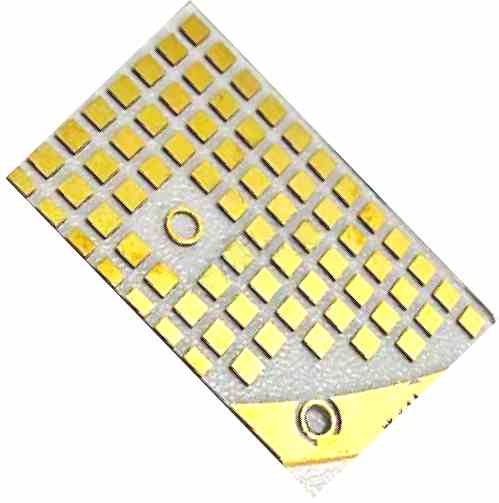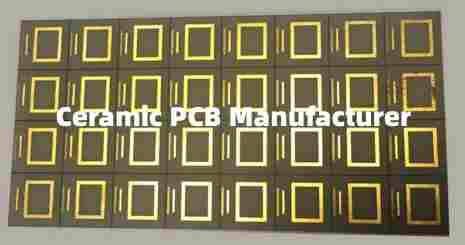Overview of Alumina
Alumina (Al2O3) is a chemical compound consisting of aluminium and oxygen. It occurs naturally as the mineral corundum, which is the crystalline form of alumina.
Alumina is one of the most commonly produced materials in the ceramics industry and has a wide variety of applications. But is alumina classified as a metal or a ceramic?
To understand whether alumina is a metal or ceramic, we first need to look at its chemical structure and properties.
Chemical Structure of Alumina
The chemical formula for alumina is Al2O3, which indicates it contains two aluminium atoms bonded to three oxygen atoms.
Aluminium (Al) is a metallic element, while oxygen (O) is a non-metallic element. So alumina contains both metal and non-metal atoms.
But in alumina, the aluminium atoms have bonded with oxygen atoms by sharing electrons. This results in the formation of covalent bonds, creating a complex 3-dimensional structure.
Properties of Alumina

Due to its chemical structure, alumina exhibits properties quite different from metals. Some key properties are:
- Alumina has high hardness and wear resistance like ceramics. Metals tend to be softer and ductile.
- It has high compressive strength but low tensile strength and brittle fracture like ceramics. Metals typically have high tensile strength and ductility.
- Alumina is electrically and thermally insulating like ceramics. Metals tend to be electrically and thermally conductive.
- It has high melting point of over 2000°C, similar to ceramics. Metals have varying but lower melting points.
- Alumina is chemically inert and resistant to acids/bases. Metals can be reactive and susceptible to corrosion.
So while containing aluminum atoms, the material properties of alumina mostly resemble ceramics rather than metals.
Classification of Alumina
Based on its properties and behavior, alumina is considered a ceramic material rather than a metal. It is classified under the broader category of “alumina ceramics” or “aluminum oxide ceramics”.
Some key factors that classify alumina as a ceramic are:
Inorganic and Non-Metallic
Ceramics are defined as inorganic and non-metallic materials. Alumina contains metal atoms but is predominantly non-metallic due to its oxygen content and covalent bonding. This makes it similar to other ceramic compounds containing metal atoms.
Crystal Structure
Alumina has an ordered crystalline structure which lacks free electrons like in metals. The crystal structure places it in the category of crystalline ceramics.
Hardness and Brittleness
The high hardness of alumina coupled with brittleness and low tensile strength is characteristic of ceramic materials. Ductility, malleability and high tensile strength of metals differentiates them from alumina.
High Melting Point
The 2000+°C melting point of alumina is consistent with refractory ceramics, as metals typically melt at lower temperatures. This enables use of alumina as a refractory material.
Electrical and Thermal Insulation
The electrical and thermal insulating properties of alumina mirrors other ceramic insulators and differs from conductive metals.
Inertness
Alumina offers high chemical inertness to acids/bases which aligns with the stable nature of ceramic materials, as opposed to the chemical reactivity seen in many metals.
Applications Based on Ceramic Nature
Alumina’s classification as a ceramic leads to some typical ceramics applications:
- Abrasives: Due to hardness, alumina is used for abrasive and cutting applications.
- Refractories: High melting point enables use as refractory linings in furnaces.
- Electrical Insulators: Utilized as insulator substrates in electronics.
- Implant Materials: Inertness allows use for hip joint implants and dental implants.
- Wear Parts: Hardness lends itself for applications like ball valves, bearings and nozzles.
- Cosmetics: Alumina is used in polishing compounds and exfoliants in cosmetics.
So alumina’s applications leverage attributes like hardness, high melting point, chemical stability and electrical insulation – consistent with its classification as a ceramic.
Contrast with Aluminum Metal

Comparing properties of alumina vs aluminum metal highlights the differences:
| Property | Alumina | Aluminum |
|---|---|---|
| Melting Point | 2072°C | 660°C |
| Density | 3.95 g/cm<sup>3</sup> | 2.70 g/cm<sup>3</sup> |
| Strength | Very high | Medium |
| Hardness | 9 Mohs | 2.75 Mohs |
| Electrical Conductivity | Insulating | Highly conductive |
| Thermal Conductivity | Low (30 W/mK) | High (237 W/mK) |
| Corrosion Resistance | Excellent | Moderate |
| Ductility | Brittle | Highly ductile |
The properties make it evident that alumina is more similar to conventional ceramics than aluminum metal, despite containing aluminum.
Is Alumina Used Like a Metal?
While alumina is not classified as a metal, it does have some metal-like applications in ceramic form:
- Ceramic Armor: Alumina’s hardness makes it useful for bullet-proof armor.
- Cutting Tools: Alumina ceramics like alumina-zirconia can be used as cutting tool inserts.
- Thread Guides: High wear resistance enables use for guiding threads in textile industry.
- Crucibles: Refractory property allows use of alumina crucibles in molten metal handling.
However, these leverages alumina’s ceramic properties like hardness and refractory nature rather than metallic characteristics.
Key Takeaways on Alumina Metal vs Ceramic Nature
- Alumina contains both metal and non-metal atoms, but exhibits predominantly ceramic properties.
- Its hardness, brittleness, electrical insulation, crystalline structure and high melting point classifies it as a ceramic.
- Alumina sees use as an abrasive, refractory material, insulator and wear-resistant component, consistent with typical ceramics applications.
- While containing aluminum, its physical properties differ significantly from aluminum metal.
So in summary, while alumina contains metal atoms, it behaves as a ceramic in terms of properties and applications. This makes alumina definitely a ceramic rather than a metal.
Alumina Ceramic Manufacturing
Now that we have established alumina is a ceramic, let’s look briefly at how it is manufactured.






Leave a Reply